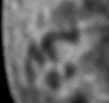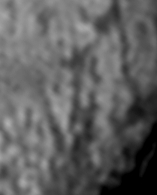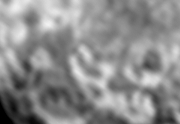New Horizons Pluto System Final Approach, 28 Jun-13 Jul 15 |

  |
New Horizons Pluto System Final Approach, 28 Jun-13 Jul 15 |
 Jul 13 2015, 04:15 AM Jul 13 2015, 04:15 AM
Post
#706
|
|
|
Forum Contributor     Group: Members Posts: 1372 Joined: 8-February 04 From: North East Florida, USA. Member No.: 11 |
....The data from the Eyes app may be not up to date (seeing they dont seem to have an accurate Pluto terrain map. Eyes has been updated, if you watch the flyby preview, Pluto shows an earlier image. They can't really be expected to update it almost 2 times per day now, as more and more observations are taken. |
|
|
|
 Jul 13 2015, 04:28 AM Jul 13 2015, 04:28 AM
Post
#707
|
|
|
Solar System Cartographer     Group: Members Posts: 10146 Joined: 5-April 05 From: Canada Member No.: 227 |
-------------------- ... because the Solar System ain't gonna map itself.
Also to be found posting similar content on https://mastodon.social/@PhilStooke NOTE: everything created by me which I post on UMSF is considered to be in the public domain (NOT CC, public domain) |
|
|
|
 Jul 13 2015, 05:22 AM Jul 13 2015, 05:22 AM
Post
#708
|
|
|
Member    Group: Members Posts: 362 Joined: 13-April 06 From: Malta Member No.: 741 |
It's still very difficult judging from the images to get a sense of topography. Although it would seem that the dark areas are topographic lows, the straight lines presumed to represent ice movement remain unclear whether the direction of movement is towards the north or towards the equator which we assume is the latter.
There is an interesting curvy line visible on the left limb of the Pluto disc over where the bright region is starting to come into view. That would be an interesting feature to view at the higher resolution. |
|
|
|
| Guest_alex_k_* |
 Jul 13 2015, 05:26 AM Jul 13 2015, 05:26 AM
Post
#709
|
|
Guests |
|
|
|
|
 Jul 13 2015, 08:19 AM Jul 13 2015, 08:19 AM
Post
#710
|
|
 SewingMachine    Group: Members Posts: 316 Joined: 27-September 05 From: Seattle Member No.: 510 |
Can't get over how much the complex regions rotating out of view superficially resemble aspects of the pull-apart wedge terrains of Europa and Ganymede at these long ranges. Perhaps a bit of Triton, a bit of Iapetus, a bit of the Galileans, and a whole lot of things we've never seen before...it's easy to imagine this system making geology across the rest of the outer solar system much easier to understand. Utterly fantastic images, and such an incredible privilege to witness this.
-------------------- ...if you don't like my melody, i'll sing it in a major key, i'll sing it very happily. heavens! everybody's all aboard? let's take it back to that minor chord...
Exploitcorporations on Flickr (in progress) : https://www.flickr.com/photos/135024395@N07/ |
|
|
|
 Jul 13 2015, 09:03 AM Jul 13 2015, 09:03 AM
Post
#711
|
|
|
Junior Member   Group: Members Posts: 47 Joined: 21-June 15 Member No.: 7518 |
Charon really looks like our Moon with craters and basins. It therefore may have been formed the same way, from a huge impact between a body and the proto-pluto dwarf planet. As the Earth, Pluto kept all "wet" materials and Charon would be a dry satellite.
-------------------- Astronopithecus normandimensis nephophobis
|
|
|
|
 Jul 13 2015, 09:26 AM Jul 13 2015, 09:26 AM
Post
#712
|
|
|
Junior Member   Group: Members Posts: 78 Joined: 16-October 12 From: Pennsylvania Member No.: 6711 |
It is also possible that the body that impacted Pluto was Charon itself. Charon was a separate body orbiting the Sun and hitting Pluto slowed it down enough to be captured. The tidal stresses created would have resurfaced both objects.
It is difficult for a giant impact to create body as large as Charon in relation to Pluto. Charon has an eighth Pluto's mass. Our moon is an eightieth the mass of Earth. |
|
|
|
 Jul 13 2015, 09:28 AM Jul 13 2015, 09:28 AM
Post
#713
|
|
|
Newbie  Group: Members Posts: 3 Joined: 7-June 13 Member No.: 6945 |
I updated the video to basically match the NASA EYES flyby map.
https://youtu.be/ZyooFO8osVU I tried to align Bjorn's map with the beginning of the clip as well as I could. It tracked well up until closest approach and Bjorn's video has a different rotation than shown in EYES. I tried to get the rotation after closest approach to closely match that shown by eyes and the position of the Sun matches at the end. Also added an update to the map in the instrument view... I know all of this is going to be old news in two days, but hey, maybe someone is interested |
|
|
|
 Jul 13 2015, 09:36 AM Jul 13 2015, 09:36 AM
Post
#714
|
|||
 Lord Of The Uranian Rings    Group: Members Posts: 798 Joined: 18-July 05 From: Plymouth, UK Member No.: 437 |
Using one of Phil's old tricks to turn a circular planetary limb into a straight line, we can see more clearly the various lumps and bumps on Pluto and Charon seen edge-on:
-------------------- |
||
|
|
|||
 Jul 13 2015, 09:47 AM Jul 13 2015, 09:47 AM
Post
#715
|
|
 Member    Group: Members Posts: 423 Joined: 13-November 14 From: Norway Member No.: 7310 |
Hoping that this (in the west)
 turns into something similar to this (in the east)  rather than this  or something else. Basically that more of those long linear things near the crescent-shape turn up a place which will be imaged at higher resolution. Otherwise, it may be a unique terrain type that we don't get to figure out completely. Though of course, it could just be a variant of not-that dissimilar terrain nearby. -------------------- |
|
|
|
 Jul 13 2015, 11:16 AM Jul 13 2015, 11:16 AM
Post
#716
|
|
|
Senior Member     Group: Members Posts: 2998 Joined: 30-October 04 Member No.: 105 |
...superficially resemble aspects of the pull-apart wedge terrains of Europa and Ganymede at these long ranges. Perhaps a bit of Triton, a bit of Iapetus, a bit of the Galileans, and a whole lot of things we've never seen before... I see bits-and-pieces of other planetary bodies (processes) turning up on Pluto-- it's almost as though when Mother Nature made Pluto, she was running out of ideas. But I think that Pluto will have plenty of surprises. I'm hoping that the light heart-shaped area on Pluto does not turn out to be a big snowfield or dunefield-- that might make for a b o r i n g primary target area. This is so much like the 1989 Neptune encounter, but much better since we only has commercial television access to the views. --Bill -------------------- |
|
|
|
 Jul 13 2015, 11:22 AM Jul 13 2015, 11:22 AM
Post
#717
|
|
|
Forum Contributor     Group: Members Posts: 1372 Joined: 8-February 04 From: North East Florida, USA. Member No.: 11 |
I'm hoping that the light heart-shaped area on Pluto does not turn out to be a big snowfield or dunefield-- that might make for a b o r i n g primary target area. From the flyby simulation high res picks of the heart area's interface with the other terrain will in itself be scientifically interesting, let alone anything else. |
|
|
|
 Jul 13 2015, 11:45 AM Jul 13 2015, 11:45 AM
Post
#718
|
|
|
Member    Group: Members Posts: 282 Joined: 18-June 04 Member No.: 84 |
While we are waiting for more images to play with, this old BBC Horizon documentary might keep you entertained
https://www.youtube.com/watch?v=pvvv8Cw1jCE QUOTE After a 12-year, three-billion-mile journey through the solar system, NASA's Voyager 2 finally reached Neptune. Horizon follows the imaging team at the Jet Propulsion Laboratory as they interpret the flood of images arriving from space.
|
|
|
|
 Jul 13 2015, 11:46 AM Jul 13 2015, 11:46 AM
Post
#719
|
|
|
Junior Member   Group: Members Posts: 45 Joined: 12-February 15 Member No.: 7397 |
Thanks Explorer1 and JohnVV for advice on the tidal effects at present being insignificant. That leads me to believe the lake-like basins were formed before Pluto and Charon's rotations became synchronised. There must have been a long period when the equatorial region was heated enough by the tidal forces to potentially melt the ice, form a thick atmosphere and instigate a hydrological cycle. With Charon's proximity, tides could have been so extreme that fluid sloshed back and forth to gouge immense cliffs at lake margins. When the energy source ran out, Pluto began to lose its atmosphere and the lakes dried up and froze.
If that interpretation is correct, Pluto will be amazing when we see it in high resolution. I wonder if any sample images or subframes thereof are scheduled to be sent to Earth in the early stages of the data transmission? |
|
|
|
 Jul 13 2015, 11:53 AM Jul 13 2015, 11:53 AM
Post
#720
|
|
 Member    Group: Members Posts: 710 Joined: 28-September 04 Member No.: 99 |
While we are waiting for more images to play with, this old BBC Horizon documentary might keep you entertained https://www.youtube.com/watch?v=pvvv8Cw1jCE "Not available in your country." A video from BBCWorldwide. Ok then. By the way, exactly 1 day until CA now. |
|
|
|
  |

|
Lo-Fi Version | Time is now: 19th April 2024 - 05:34 PM |
|
RULES AND GUIDELINES Please read the Forum Rules and Guidelines before posting. IMAGE COPYRIGHT |
OPINIONS AND MODERATION Opinions expressed on UnmannedSpaceflight.com are those of the individual posters and do not necessarily reflect the opinions of UnmannedSpaceflight.com or The Planetary Society. The all-volunteer UnmannedSpaceflight.com moderation team is wholly independent of The Planetary Society. The Planetary Society has no influence over decisions made by the UnmannedSpaceflight.com moderators. |
SUPPORT THE FORUM Unmannedspaceflight.com is funded by the Planetary Society. Please consider supporting our work and many other projects by donating to the Society or becoming a member. |

|